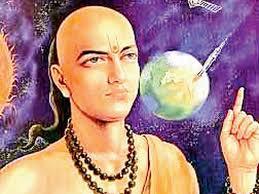Aryabhata was an Indian mathematician and astronomer from Kusumapura (modern-day Patna, Bihar), known for his groundbreaking contributions to algebra, trigonometry, and astronomy. His most famous work, Aryabhatiya (499 CE), laid the foundation for many mathematical concepts.
1. Algebra and Number System
Aryabhata is credited with the invention of algebra, though algebraic concepts also appeared in earlier Vedic texts.
He introduced the “Kuttaka” (meaning “pulverizer”) method, an early approach to solving indeterminate equations (now known as Diophantine equations).
His work influenced later mathematicians like Brahmagupta and Bhaskara II in solving Pell’s equation.
2. Approximation of Pi (π\pi)
Aryabhata provided an astonishingly accurate approximation of pi:
π≈3.1416\pi \approx 3.1416
He described it as an irrational number, centuries before this was formally recognized in Europe.
3. Place Value System and Zero
Aryabhata used a place-value system, a precursor to the modern decimal system.
While he did not use a symbol for zero, his system implicitly contained the concept of zero.
4. Trigonometry and Sine Functions
He introduced trigonometric tables, using sine functions instead of chords (unlike Greek mathematicians).
He defined sine (jya) and cosine (kojya), influencing later trigonometric developments.
5. Astronomy and Earth’s Rotation
Aryabhata correctly proposed that the Earth rotates on its axis, explaining the apparent movement of stars.
He estimated the sidereal rotation period (the time Earth takes to rotate once relative to the stars) as 23 hours, 56 minutes, and 4.1 seconds—very close to modern calculations.
He calculated the length of a year as 365.258 days, remarkably close to the modern value.
He explained solar and lunar eclipses scientifically, refuting the myth of Rahu and Ketu swallowing the Sun and Moon.
Aryabhata’s work heavily influenced later Indian mathematicians like Brahmagupta, Bhaskara I, and Bhaskara II.
His works were translated into Arabic in the 8th century and later influenced European scholars.
India’s first satellite, Aryabhata (launched in 1975), was named in his honor.







